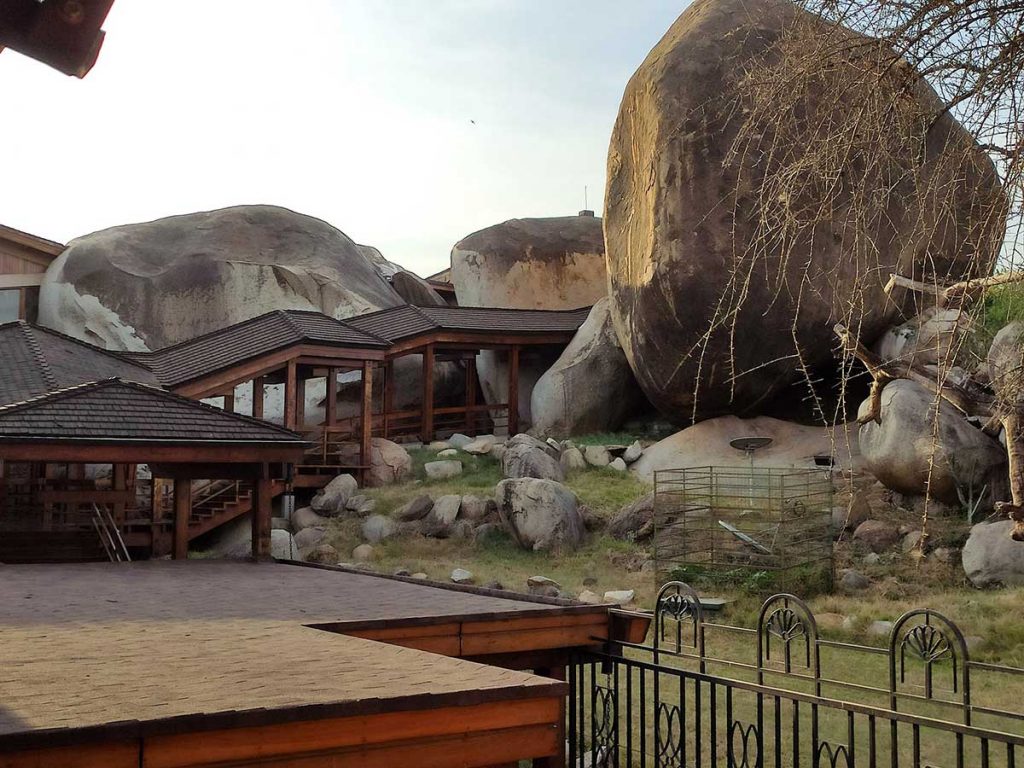DAY 1
So, the second stage of our adventure in Tanzania – the safari – begins.
After warmly goodbyes over breakfast to the first stage participants heading home (just ten days together, yet it felt like we had known each other for years), we set off. Stopping near a charming café for some errands, we decided to try its offerings. It turned out that pastries (carrot and cheesecake) were of the level hard to find even in Europe. And then I made a mistake: I ordered an espresso. The drink they brought me tasted more like lemon juice. That’s how coffee is in Tanzania and Ethiopia – with a distinct sour taste.
Finally, we hit the road. Before long, our driver took us to a massive, luxurious, and outrageously expensive souvenir shop. I bought a few things and learned a valuable lesson: you have to bargain like in an Arab market. Along the way, we picked up a cook with groceries; she would be preparing our meals for the next two days. Spoiler: everything she made was absolutely delicious.

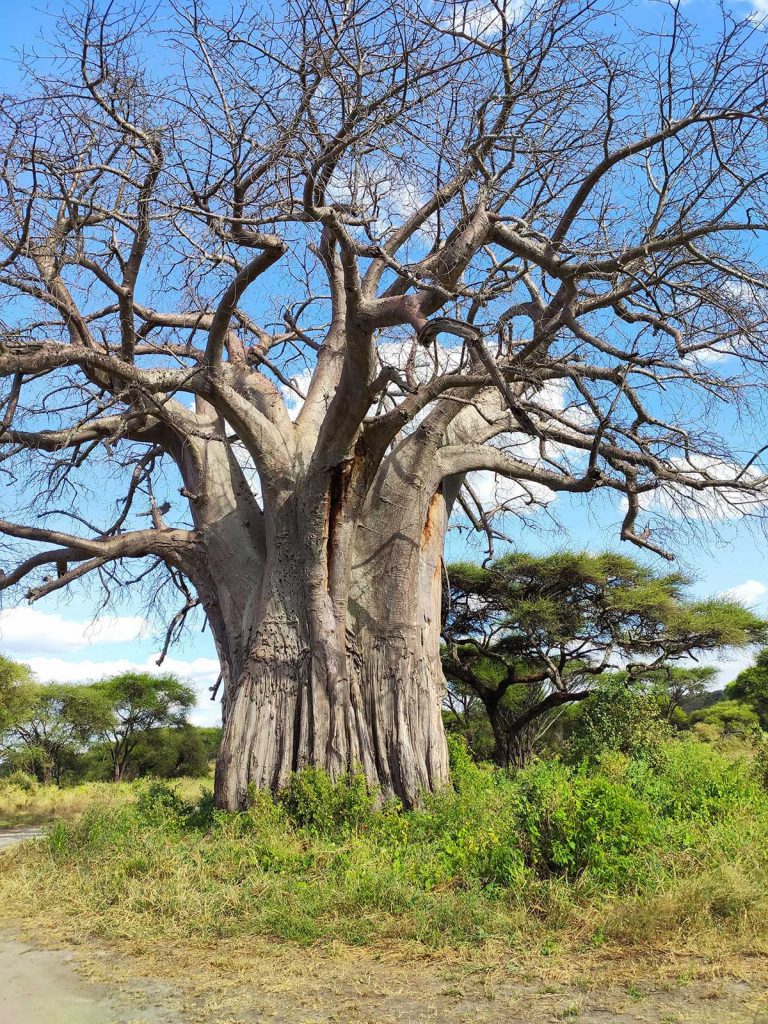
We enter the first national park on our route – Tarangire National Park. After lunch, we set off in search of wildlife. As we drive through the park, we encounter all sorts of animals: a pair of funny warthogs, with a mane resembling that of small horses and faces somewhat like tapirs’, wildebeest, giraffes, countless zebras, a variety of beautiful birds, and the smallest member of the antelope family – the tiny dik-dik. Along the shore, mongooses scurry about, while two vultures perch atop a tree. A leopard tortoise with a beautifully patterned shell crosses our path. And plenty of other creatures whose names I didn’t manage to remember.
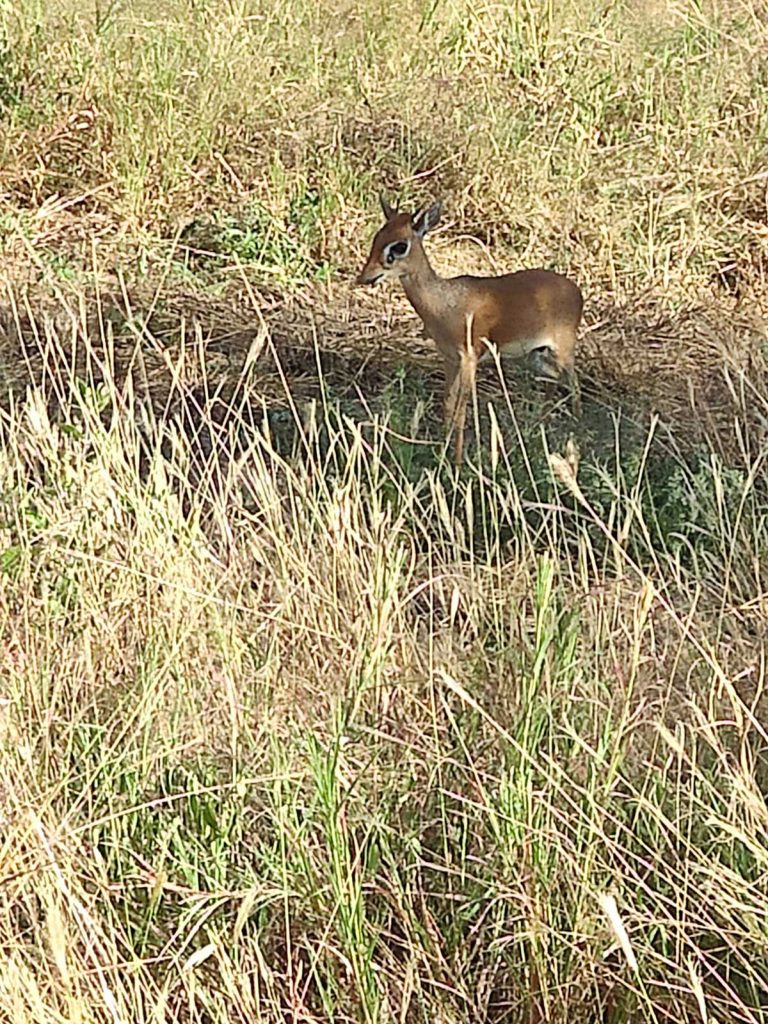
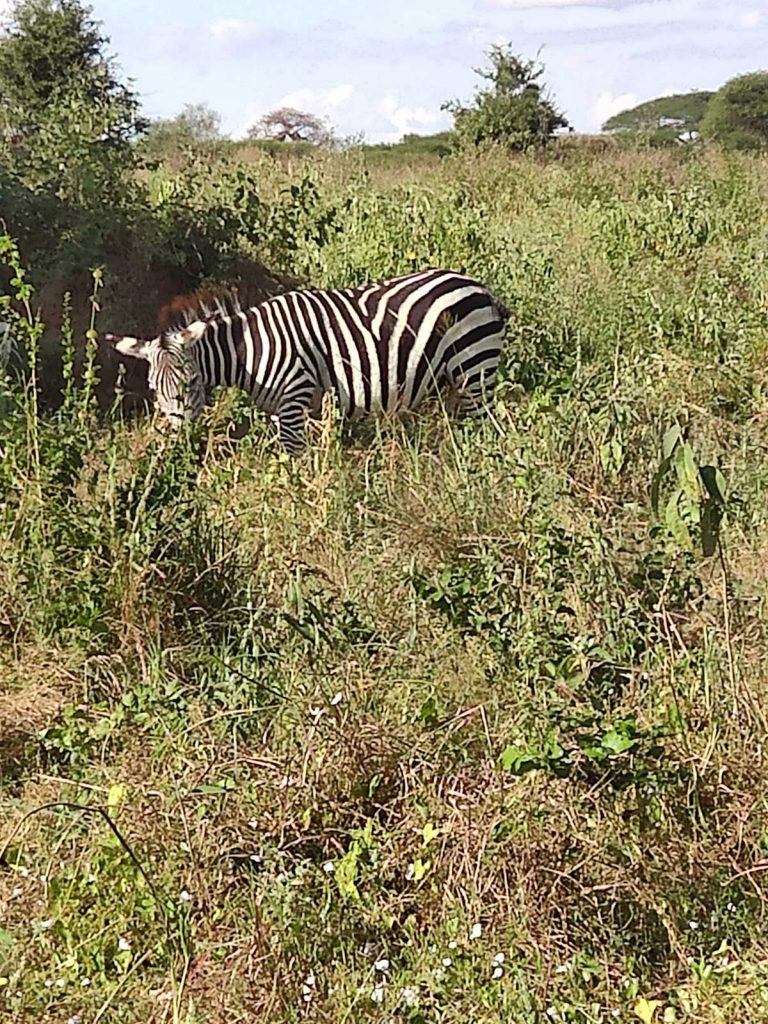
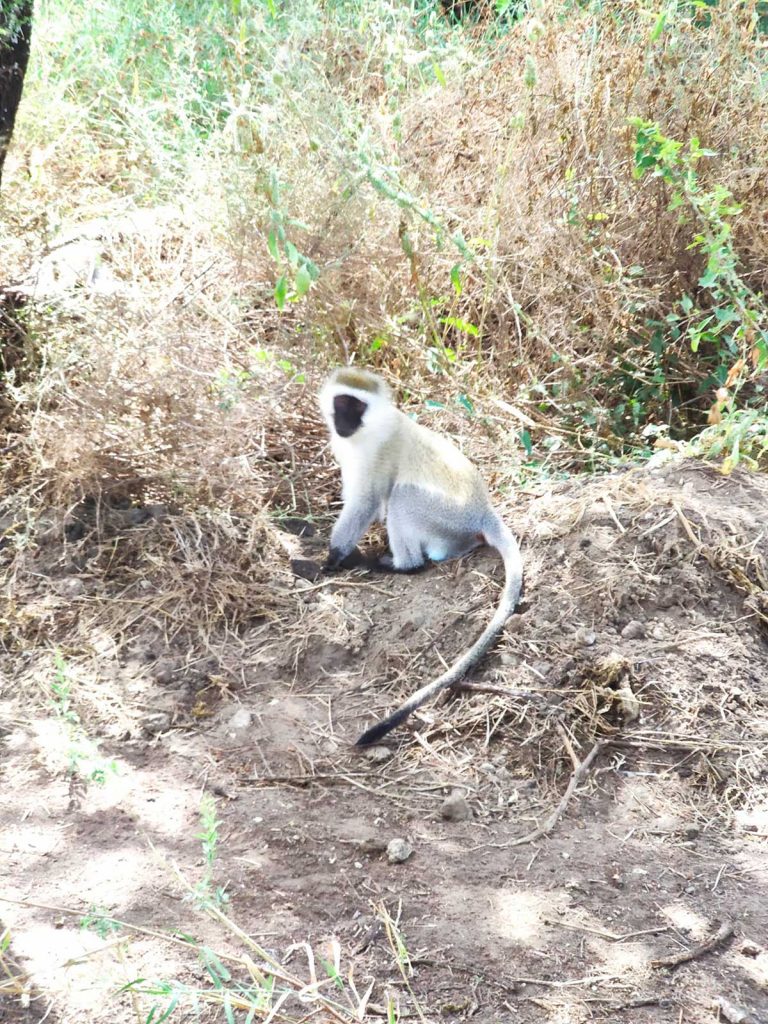
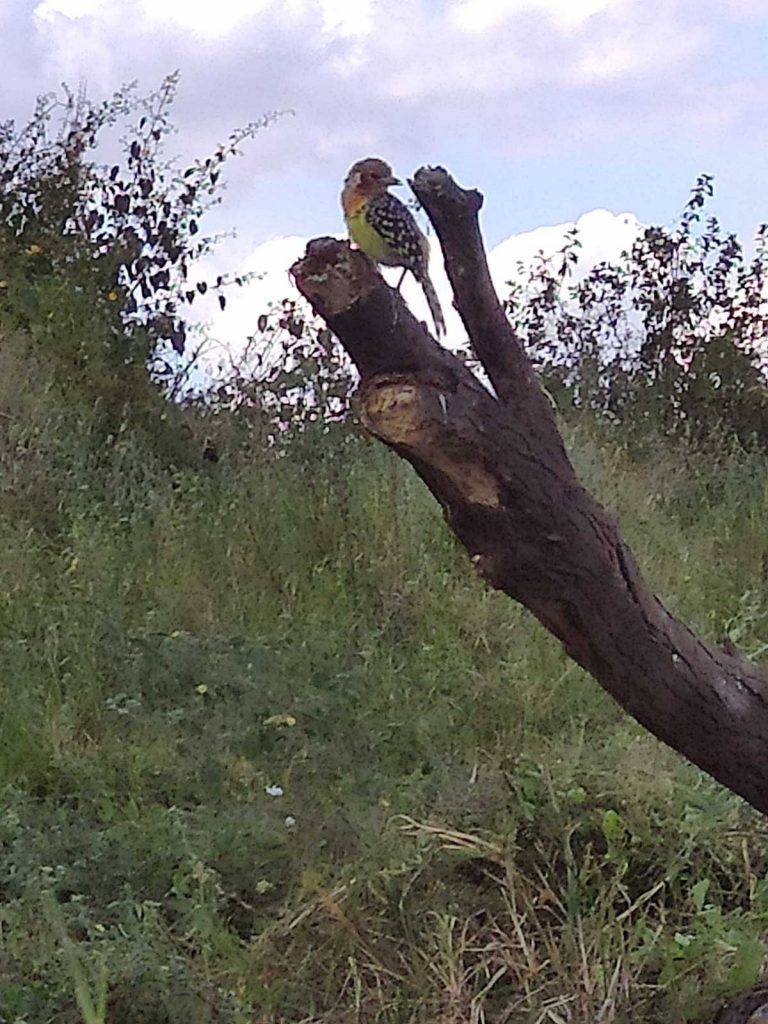
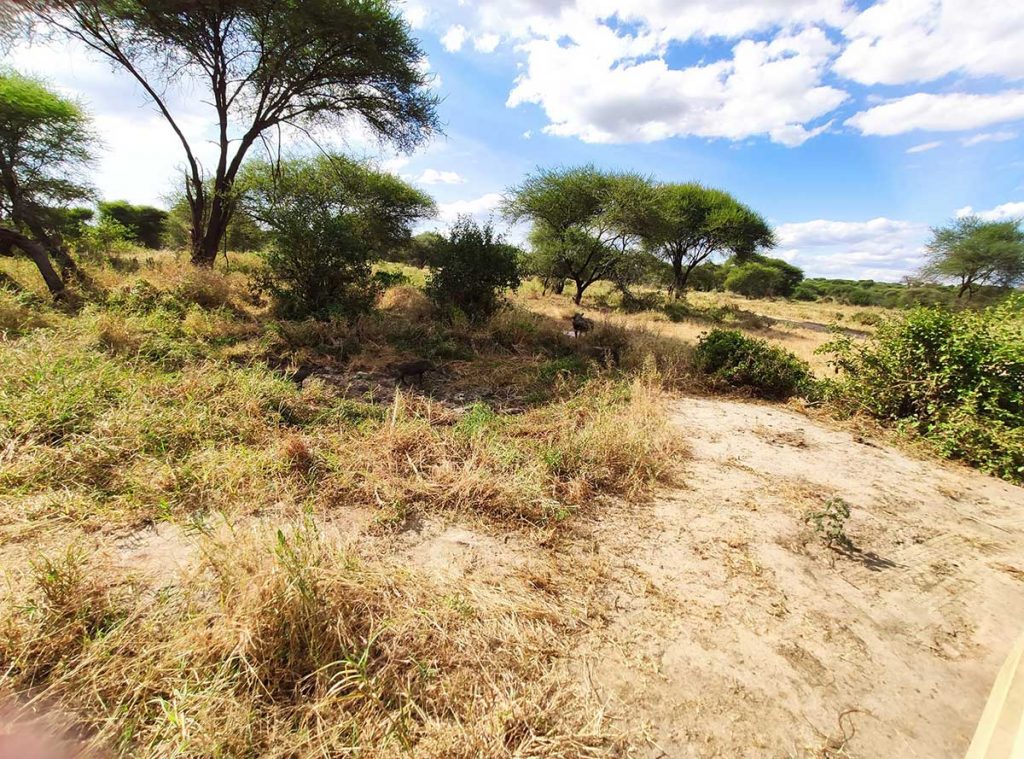

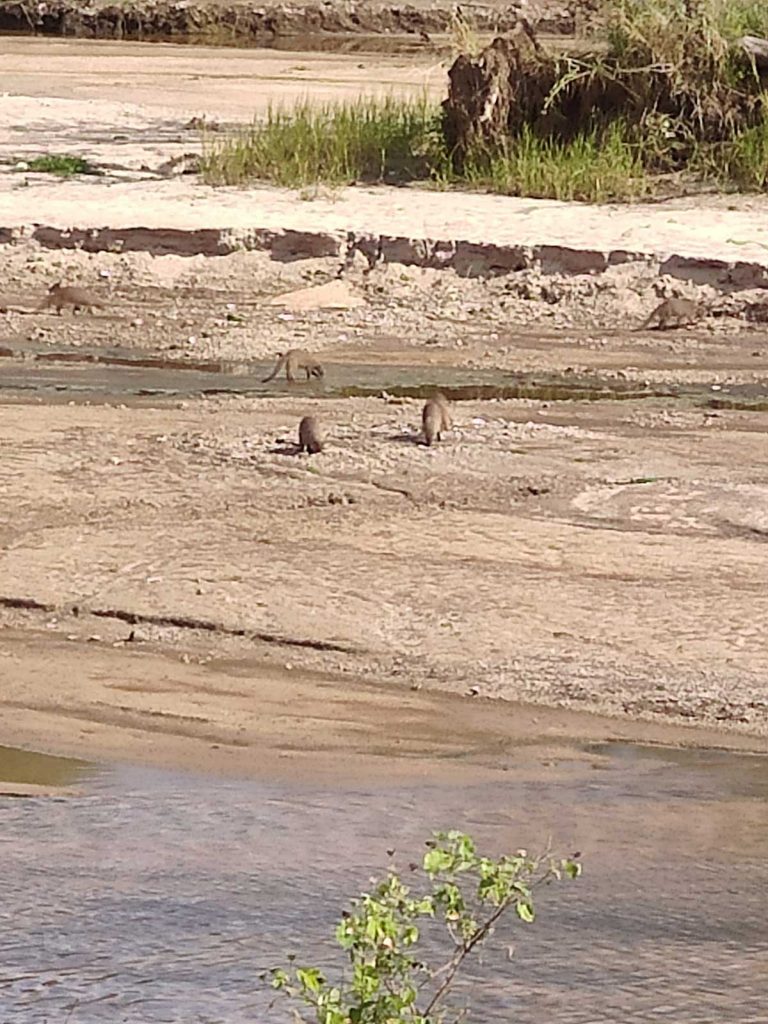
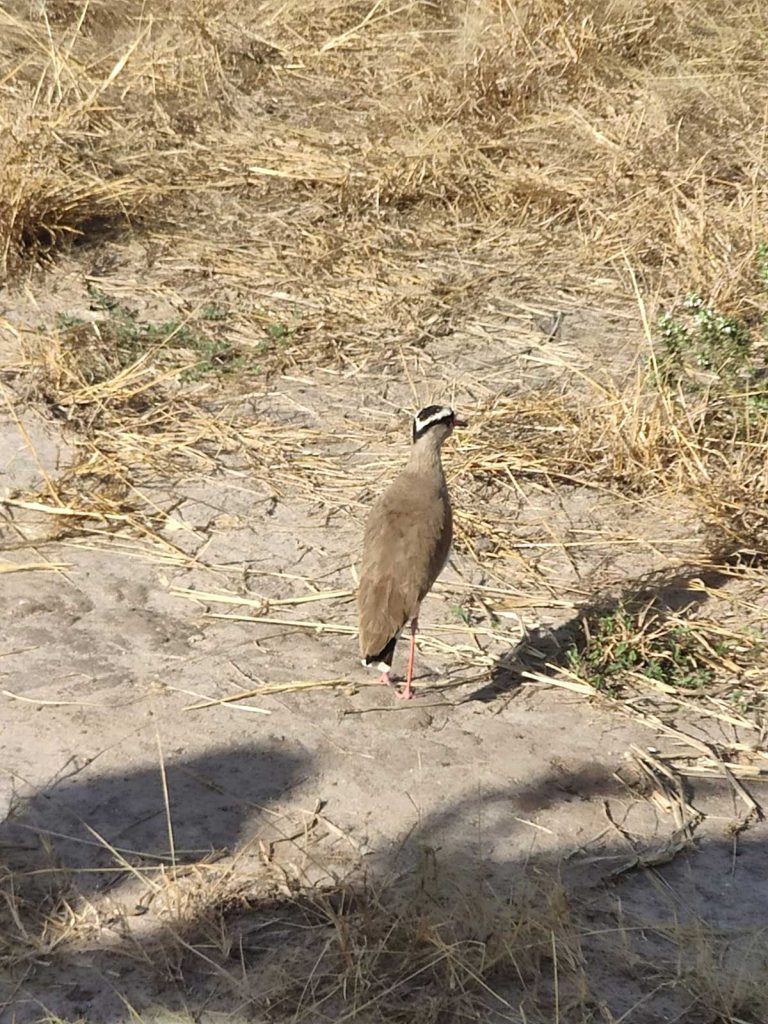

And then the elephants appear. Many of them. One passes just three meters from our car. It’s an incredible sight, though it doesn’t quite evoke the same breathless awe and reverence as when we first watched a wild elephant family. At the rest area, a family of black-faced, or velvet, monkeys is playing around. They scratch, jump, and engage in other activities—after which the female dramatically raises her hands high, as if complaining about her partner’s insatiable appetite.

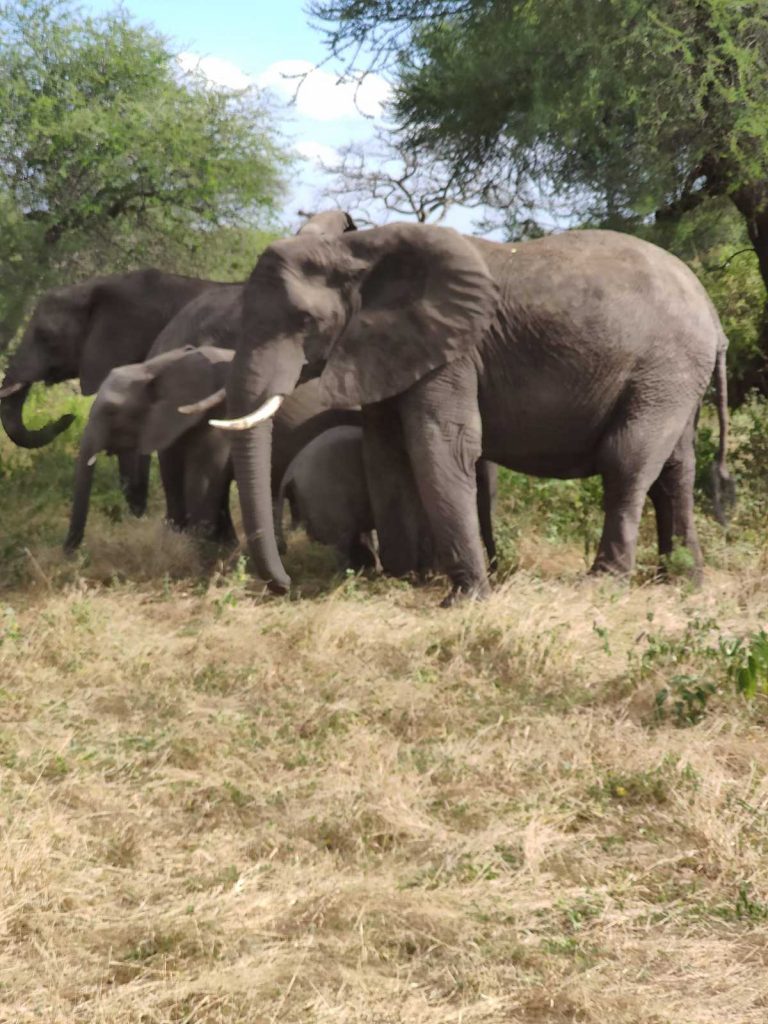
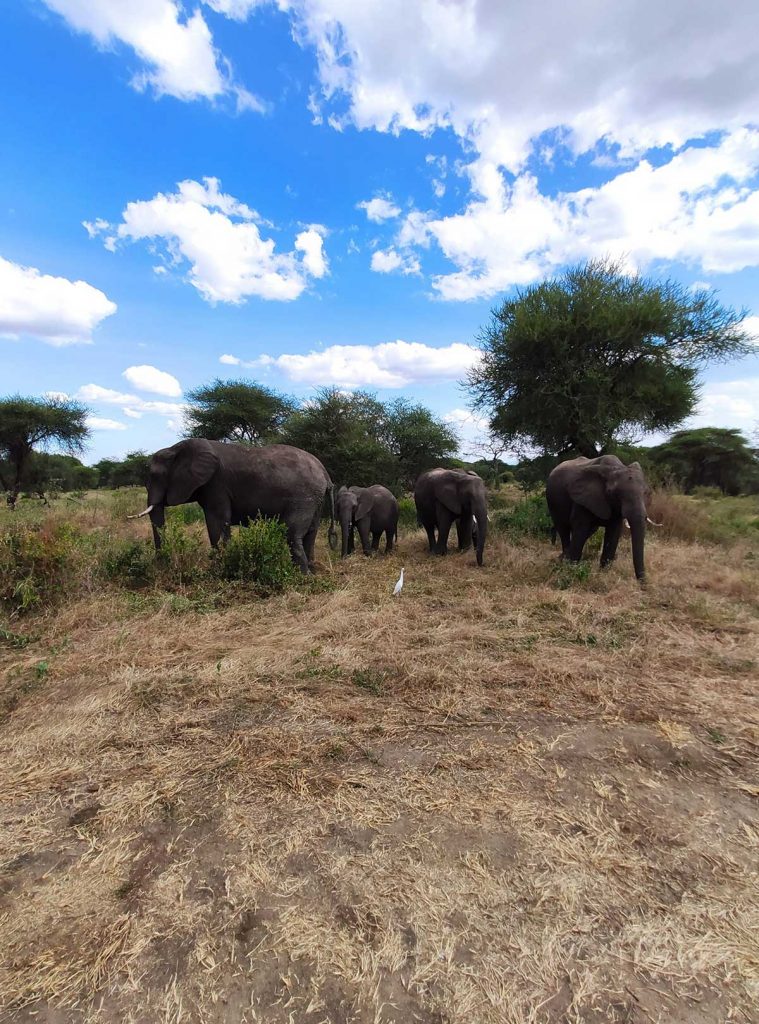
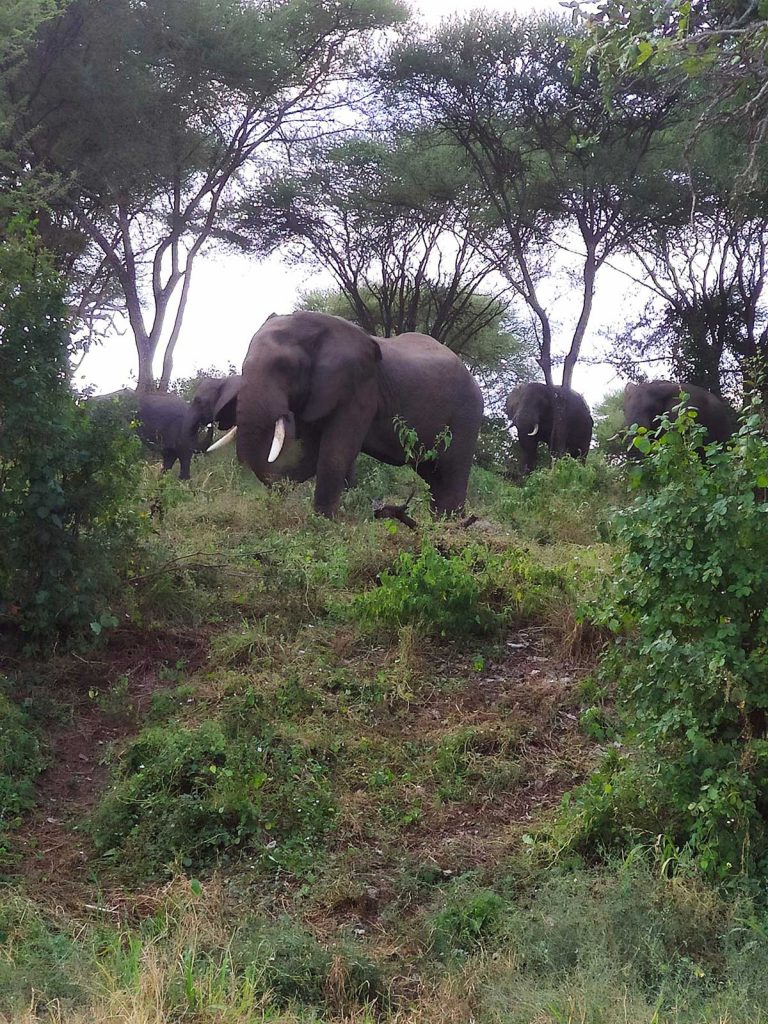
We managed to spot a leopard, though only from a distance. Baobab trees tower everywhere, many of them hosting vulture nests. The baobabs are leafless, as they prefer to go without during the dry season. No lions in sight, the tall grass hides them as they hide from the heat. The sunset is stunning. Our day of “hunting” comes to an end. We head back to our lodging, where a dinner prepared by our personal chef awaits us.
DAY 2
An early start, and off we go. Once again, we scour the park’s roads, tirelessly searching for wildlife. In the distance, we catch a glimpse of a lioness darting by. Spotting large predators is tough – it takes a great deal of luck. And today, we got lucky: our driver received a signal and sped off. We raced past a pair of warthogs, which I once again failed to capture on camera.
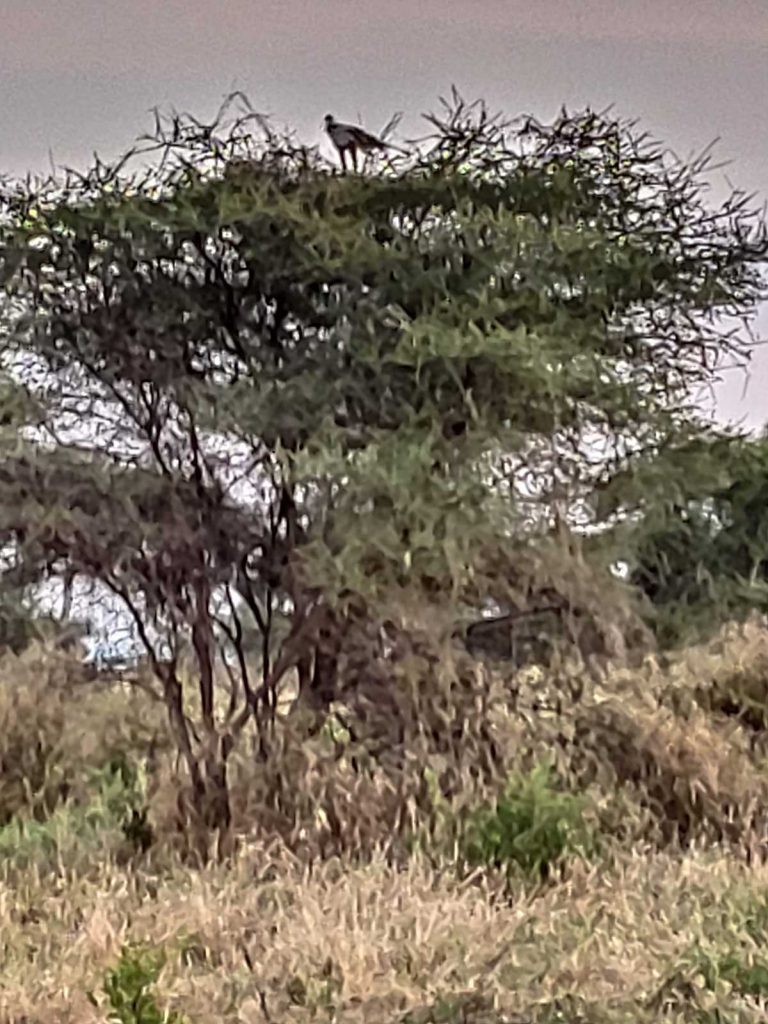
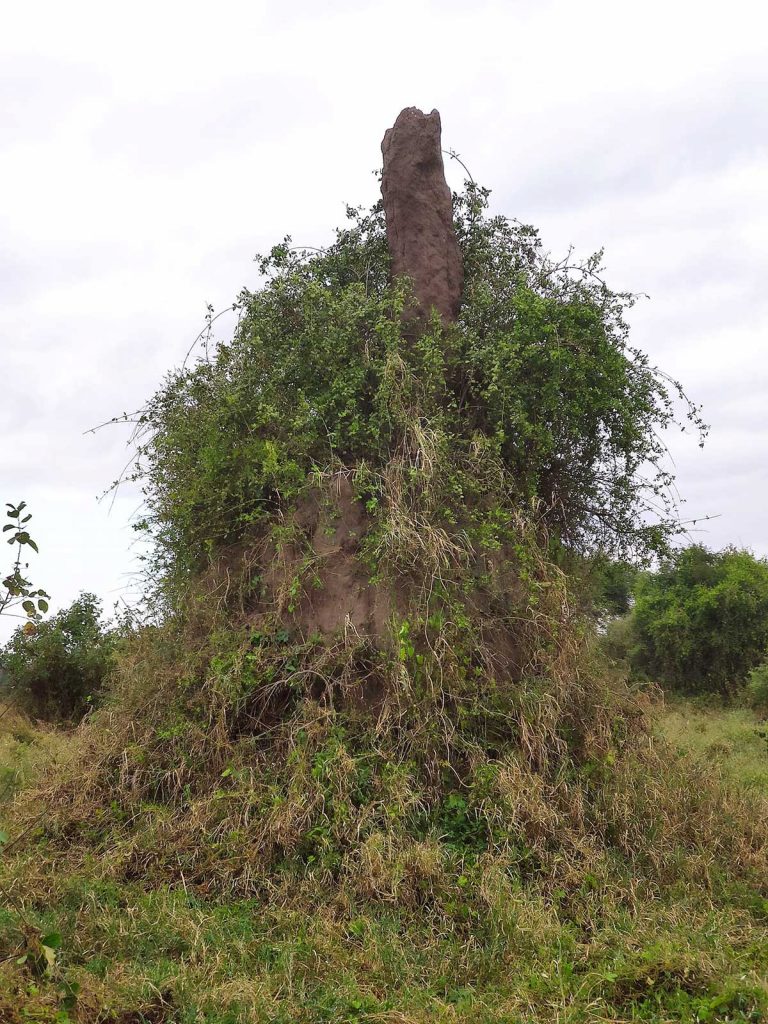
We rushed to a spot where several cars had already gathered: two cheetahs had been spotted preparing for a hunt. Everyone was waiting in anticipation. Slowly, they rose and emerged from behind a bush. A large herd of zebras grazing in the open nearby became alert. One of the cheetahs began circling the herd, searching for a foal, as an adult zebra would be too difficult to take down. The zebras kept a close watch on her. Suddenly, she made her move, sprinting like an arrow toward the herd, which scattered in a frantic escape. They all vanished into the distance, leaving us without an answer to how this deadly game ended. Witnessing such a scene is an incredible stroke of luck.

We moved on. Perched high on a branch was a black-and-white Egyptian goose—an unusual sight to see a duck so high up in a tree. On another treetop stood a secretary bird, surveying the land. For the first time, we spotted ostriches, a black-feathered male and several gray-feathered females. Their coloration is no incidental: the female incubates the eggs during the day, blending into the sun-bleached grass, while the male takes over at night. More baobabs lined the landscape.
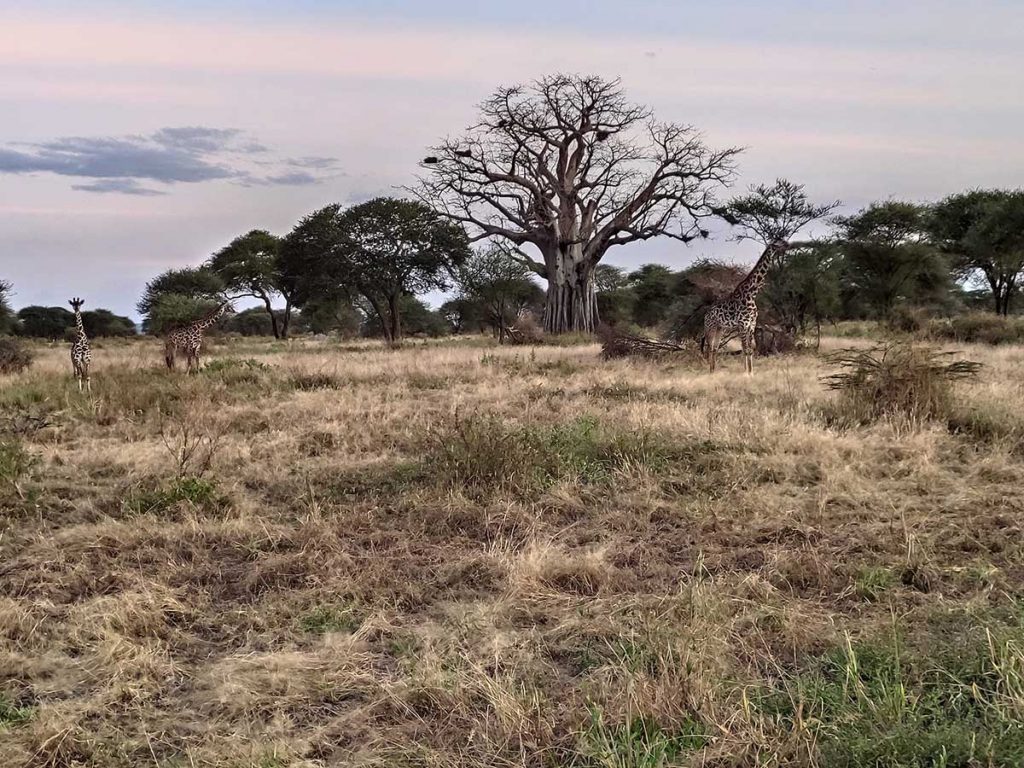
They look different from the ones we’re used to seeing in pictures, those barrel-shaped trees with smooth bark and small canopies. These had rough, gnarled bark, and their trunks appeared to be made up of several fused together, much like ancient olive trees. Their canopies were also much larger.
We stopped by a troop of baboons. More endless zebras. Waterbucks. Guinea fowls wandering along the roadside. Our time in the park was coming to an end, our entry ticket being valid only for one day. We headed back to camp, had a meal, packed our things, and continued our journey.
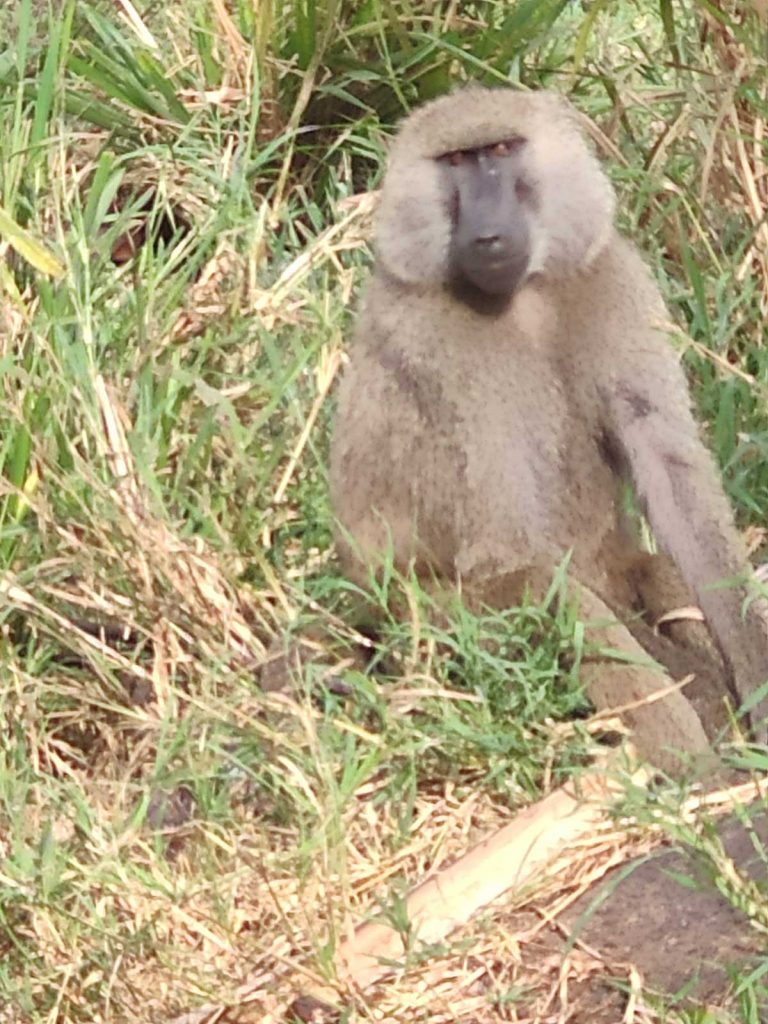
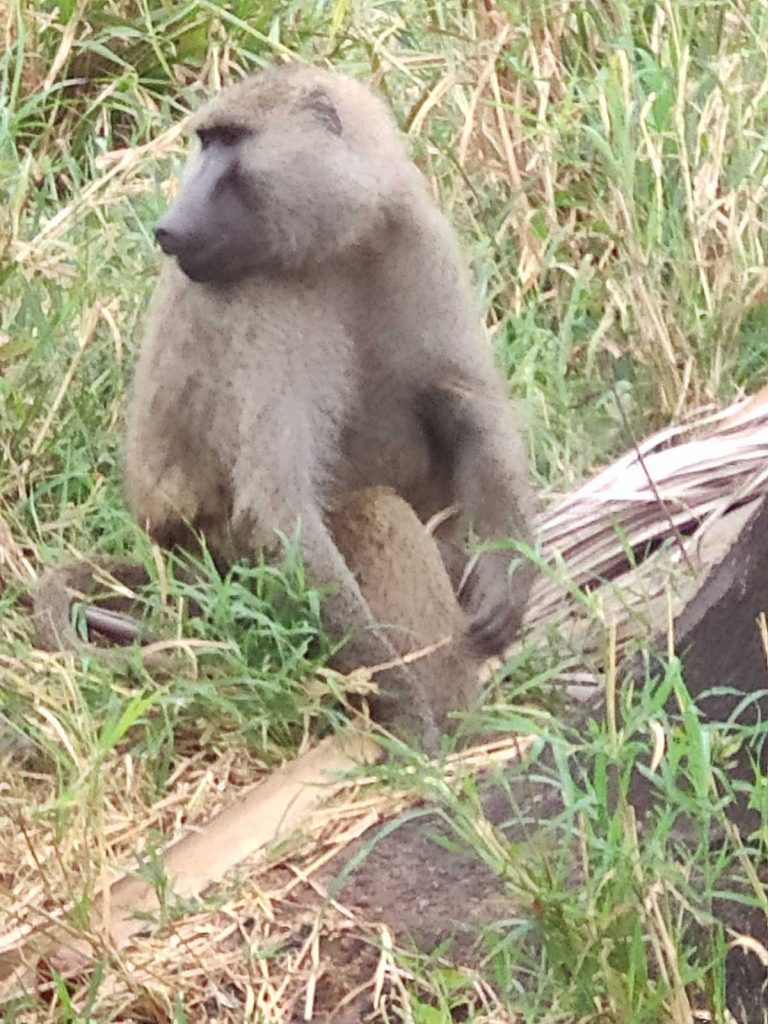
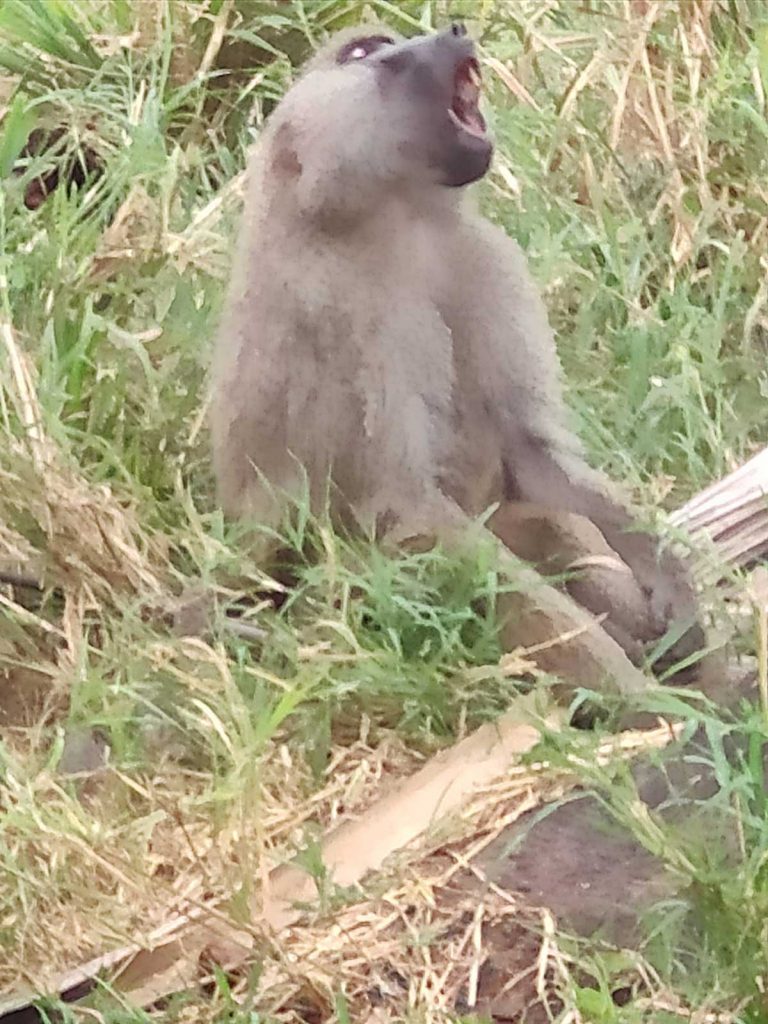
Our driver took us to a Center selling tanzanite, a unique semi-precious gemstone found only in Tanzania. The prices reflected its rarity—tiny stones cost hundreds of dollars, while the larger ones were even more expensive. But they were stunning. The colors ranged from deep blue to violet, with some lighter shades and even rare green ones. After admiring them for a while, we left empty-handed.

We soon arrive at the hotel. Finally, a proper level of comfort. There is shampoo and shower gel, liquid soap, and even a hand towel—all for the first time. I grab a towel and head to the pool. The water is shockingly cold, but I manage to make a few laps before running back to warm up. After dinner, we head to bed early—tomorrow, we have an early start for our trip to the Ngorongoro Crater, the highlight of our journey.
DAY 3
Great expectations often bring disappointment. And this time, it was almost the case. I had imagined something truly grand, only to find it was just… interesting.
Here’s how it went. Early in the morning, we set off for Ngorongoro. It was overcast. A bit concerning—what if it rained? Just as we left town, we spotted a group of baboons sitting right on the asphalt, completely unbothered as they went about their business. We carefully drove around them.

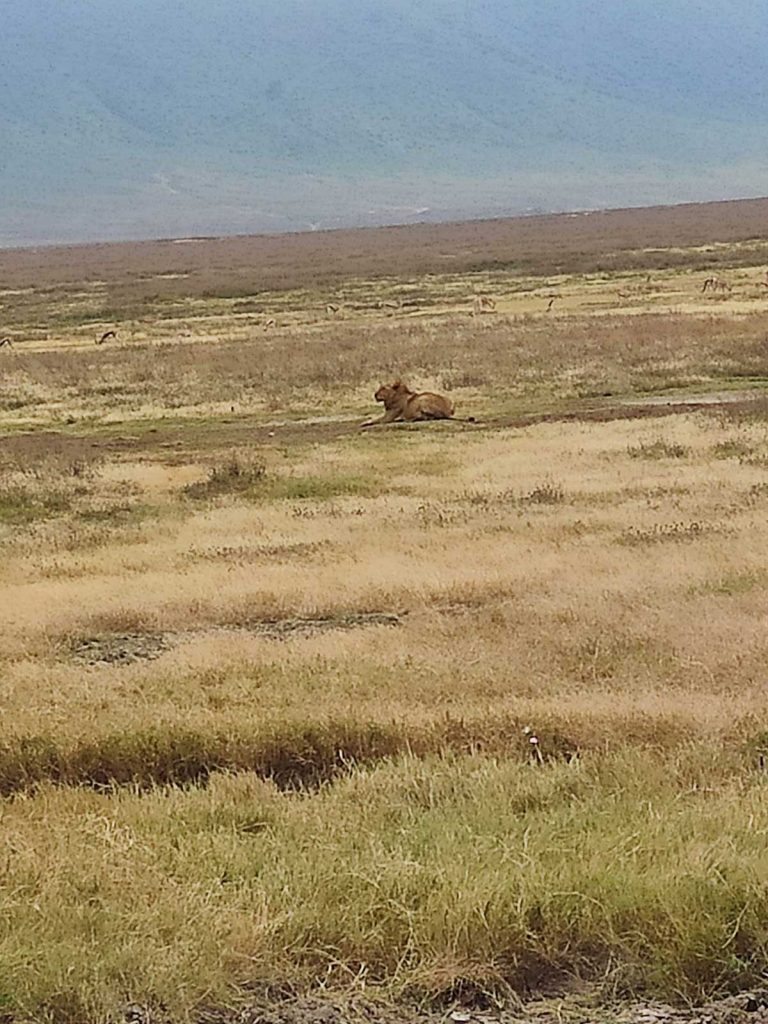
We quickly reached the entrance to Ngorongoro Park. As soon as we passed the gates, a tropical forest began. Lush greenery, towering trees tangled with vines, and deep ravines shrouded in mist. As we ascended, the fog thickened, enveloping everything around us. Concerned, I turned to our driver-guide, but he reassured me that everything would be fine inside the crater.
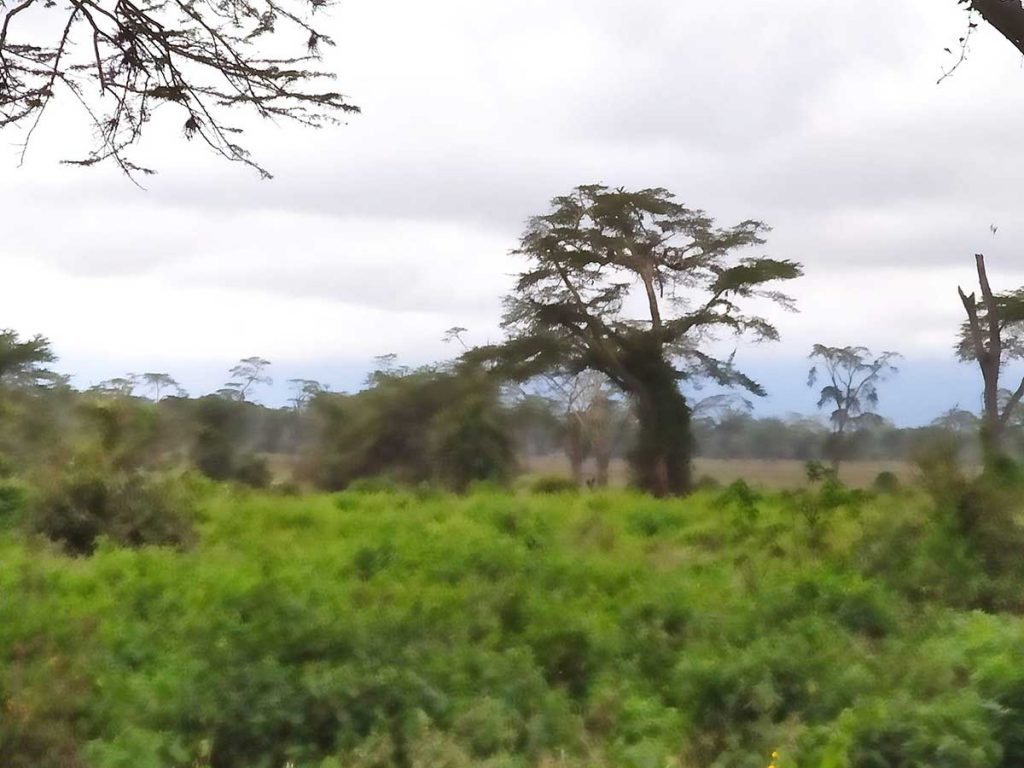
Suddenly, as if cut off with a knife, the tropical forest ended, and the savanna began. We reached an altitude of 2,400 meters. The wind was strong, and it was cold. The fog remained below. We began our descent into the crater. It was enormous. In the center, where the crater’s volcanic mouth once was, lay a sizeable lake. And then, we were at the bottom. Indeed, there was no rain, the clouds began to disperse, and only a dense, snow-white layer of clouds clung to the crater’s rim. It was getting warmer.
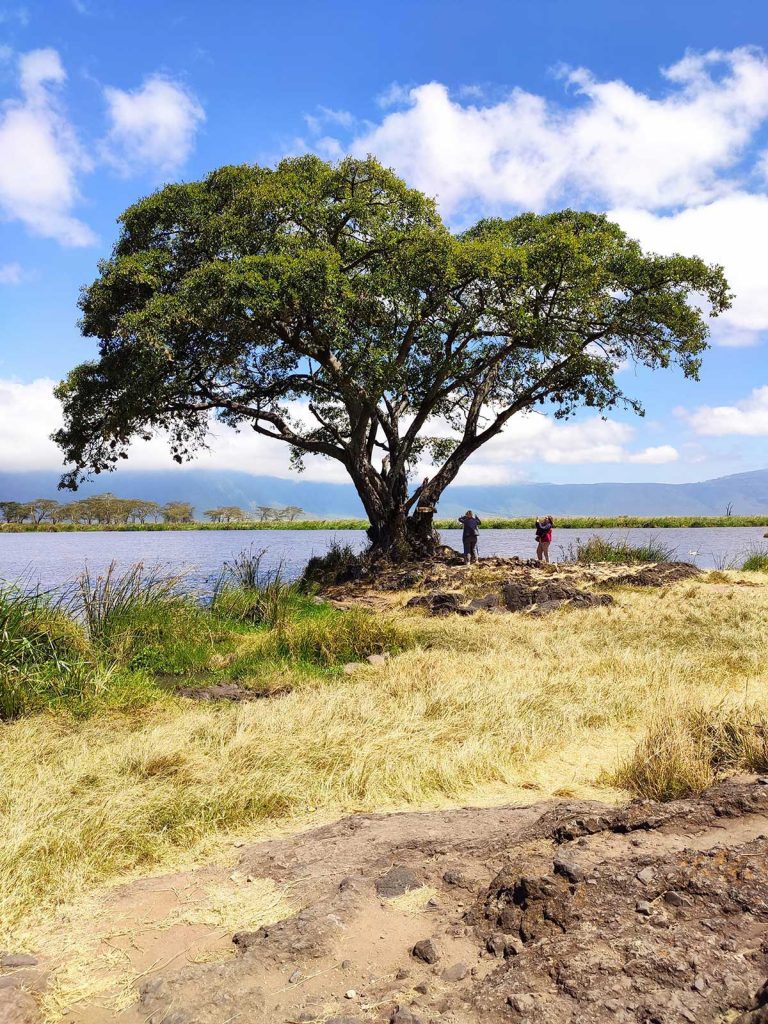
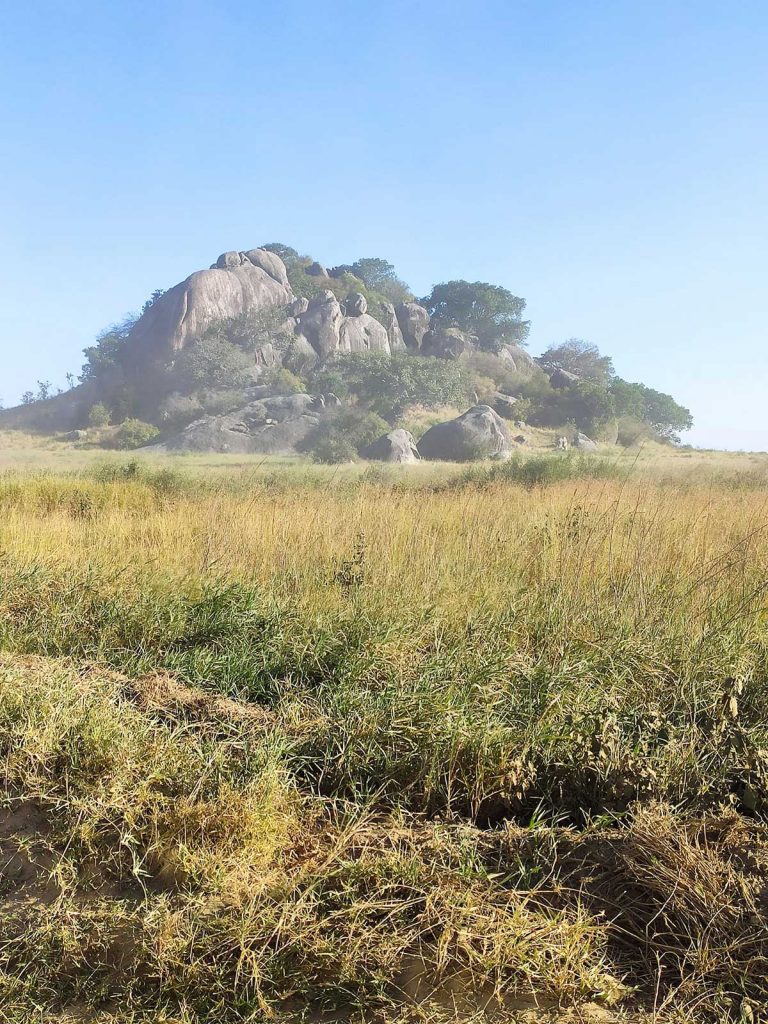
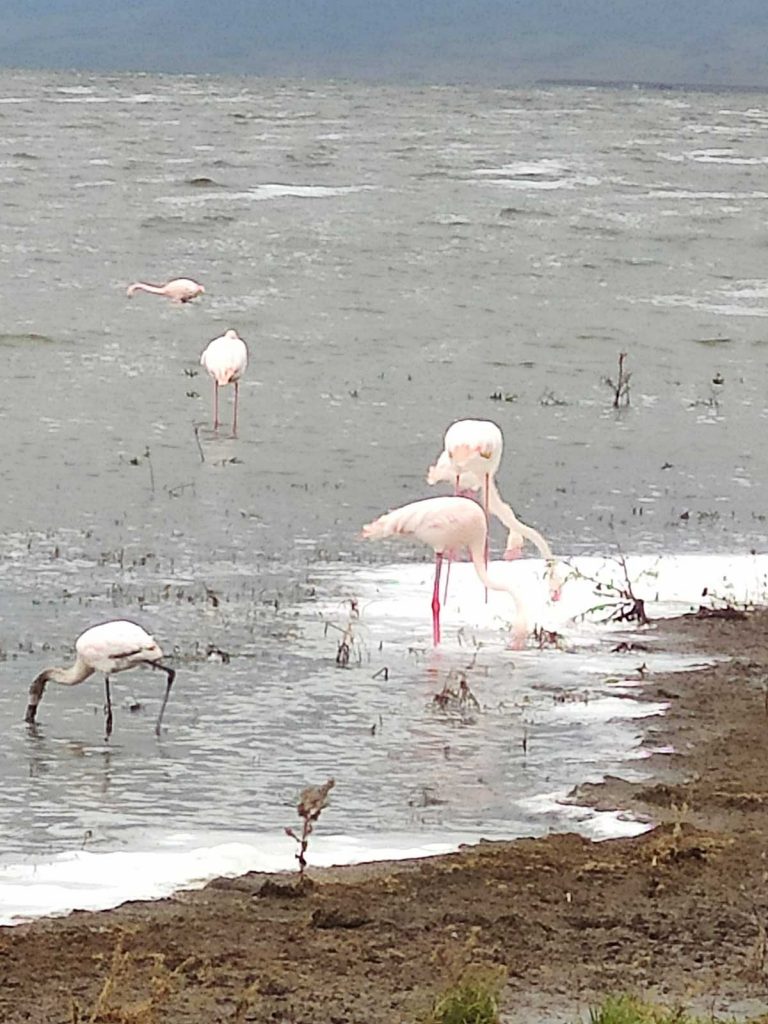
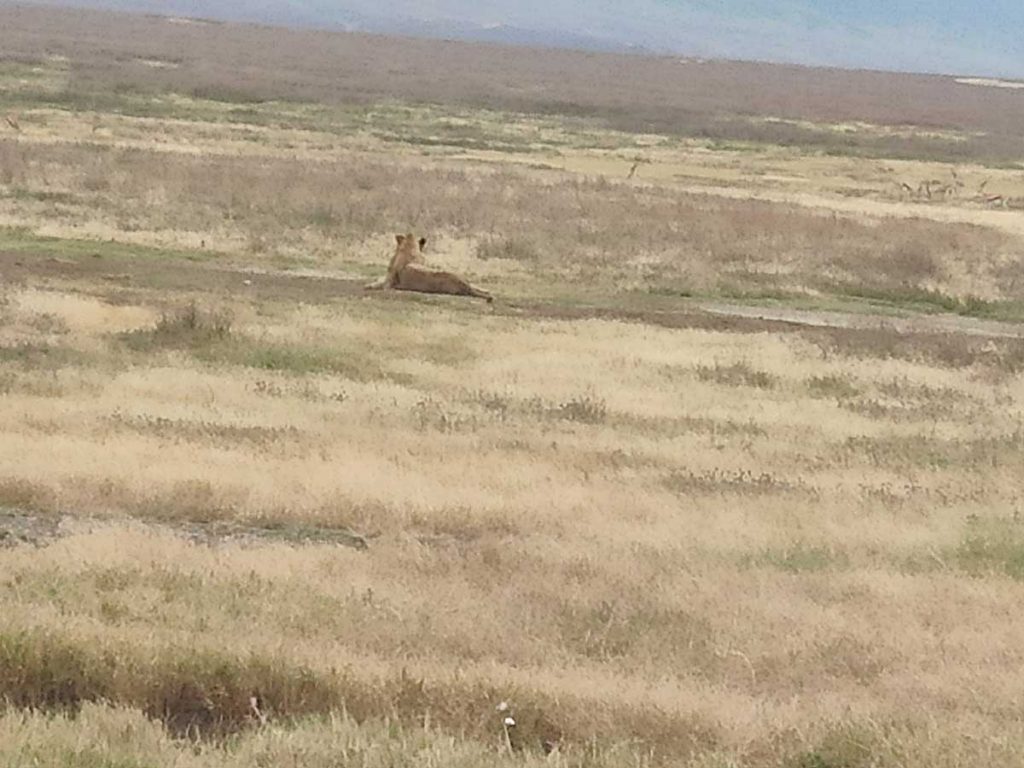
We begin searching for wildlife. Thompson’s gazelles graze alongside the larger, more slender Grant’s gazelles, with their strikingly sharp horns. Suddenly, all the vehicles stop—a young lion flashes in the distance. We continue onward. By the lake, we spot a flock of pink flamingos. When they take flight, their pink underwings are beautifully highlighted by a black stripe, which European flamingos—like those we saw in southern France, in Camargue—do not have.
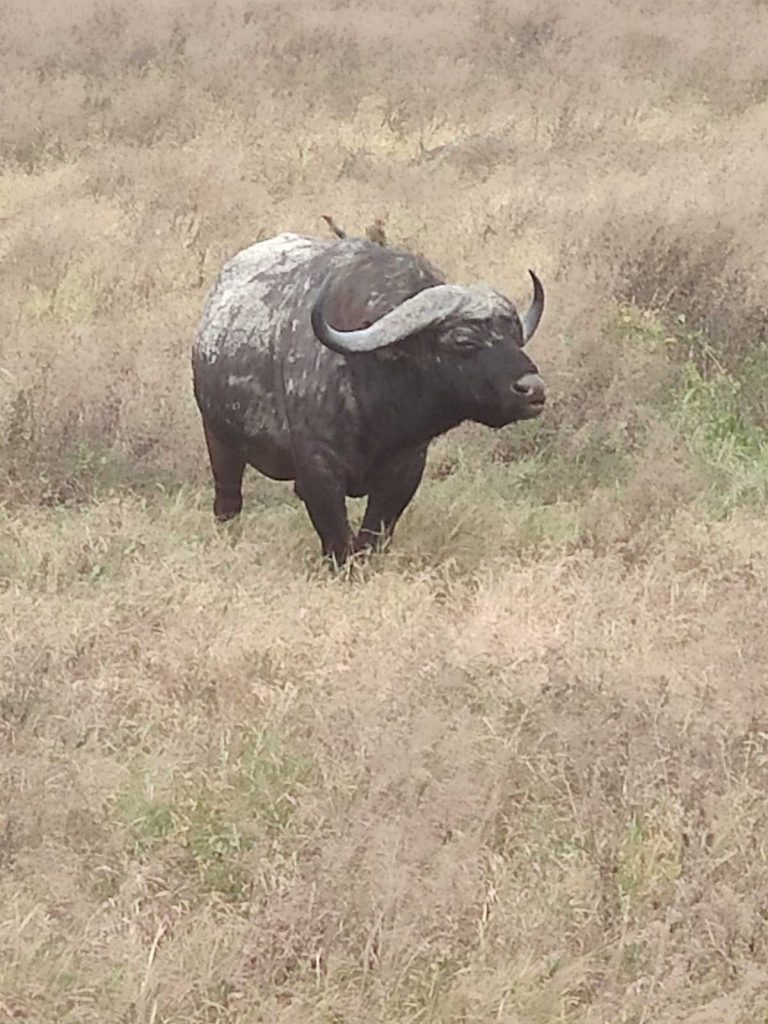
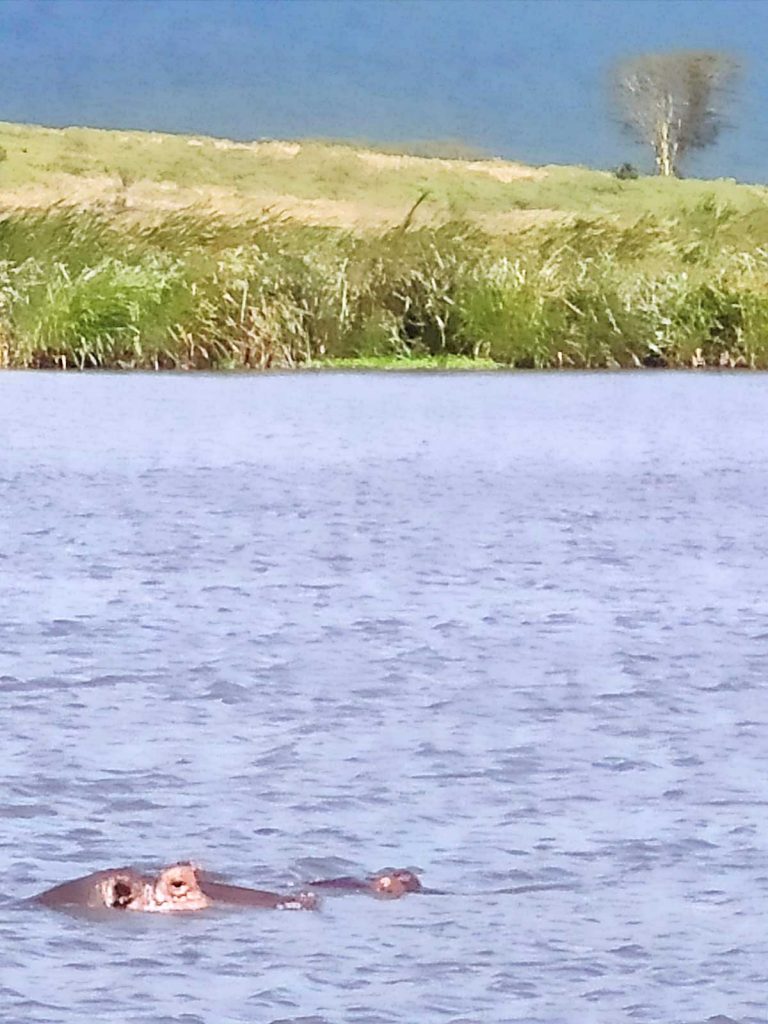
Finally, we come across a powerful buffalo. In another part of the lake, a hippo’s head emerges from the water, mouth wide open. Nearby, a pelican floats gracefully. A distant tree is completely white, covered in egrets. Earlier, we saw storks. Another lion appears. Just as we start taking pictures, he stands up and disappears into the tall grass. Our visit to Ngorongoro is over.
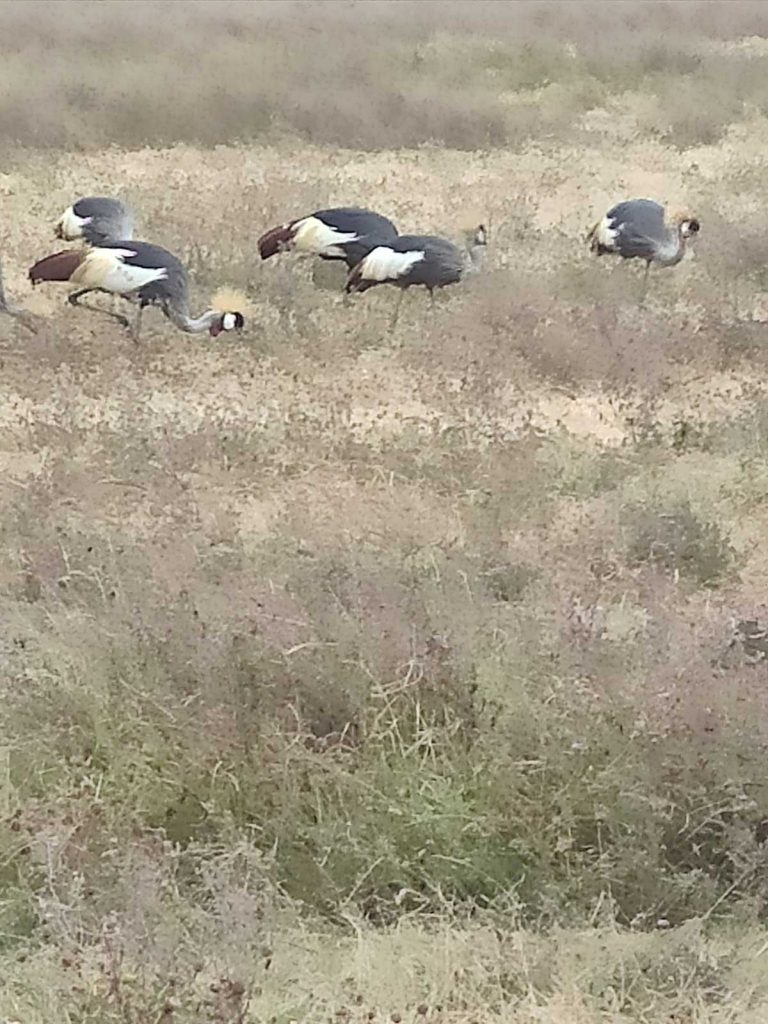
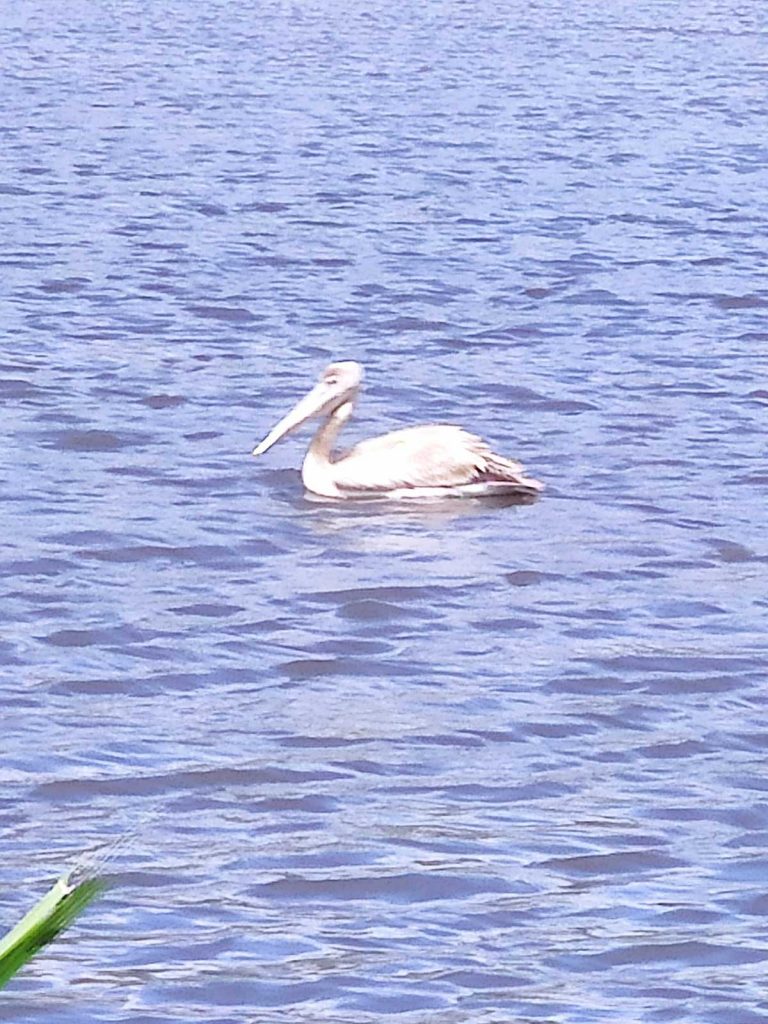
We leave via another road, continuing our journey to Serengeti National Park. As we pass by a Maasai village, a Maasai folklore group rushes out, dancing in an attempt to lure us in. A visit to such a performance costs $50. Seeing the Maasai dances would be interesting, but we’ve already seen them “in the original,” and we don’t have time for this staged village. This part of Ngorongoro Park looks completely different: almost no trees, just endless savanna, almost a semi-desert.
Finally, we arrive at the entrance to Serengeti National Park. While our driver handles the paperwork, I visit the information center and learn some fascinating facts. It turns out that the Maasai arrived in this region from the Nile in the 18th century. This explains why they are scattered across the country—during their migration, some groups settled in different places while others kept moving. Much like some Hungarians who stopped in Transylvania while others continued to Pannonia plane or the Spanish Jews expelled from Spain, who settled in Bulgaria, Greece, and some neighboring countries on their way to the Ottoman Empire.
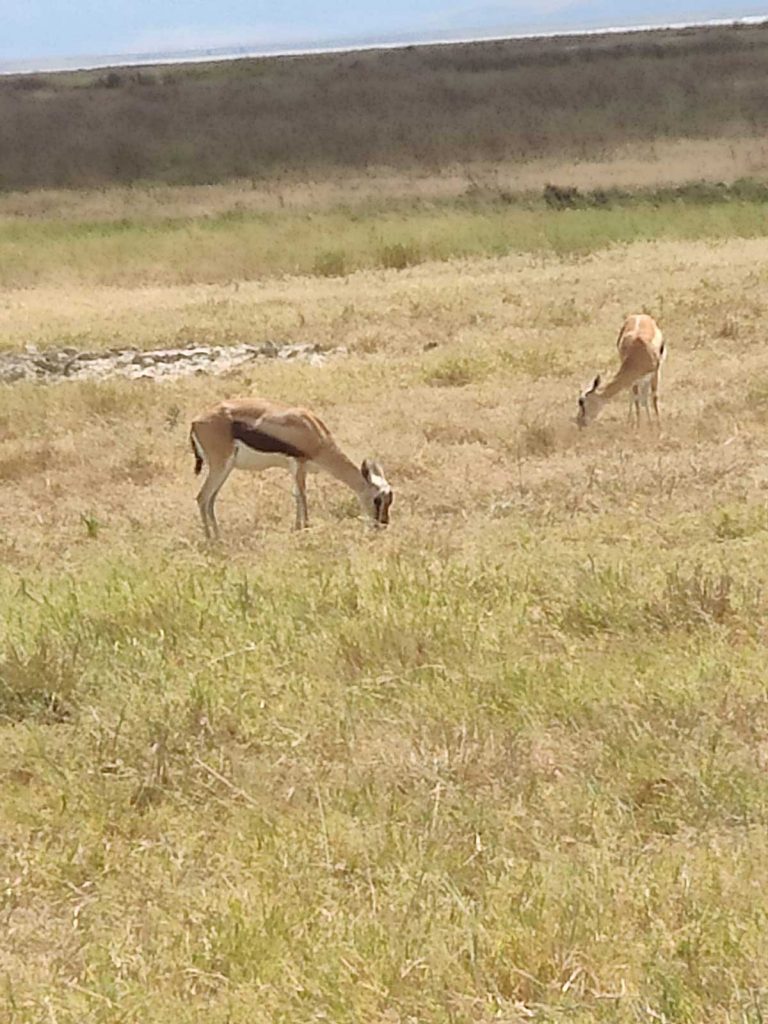
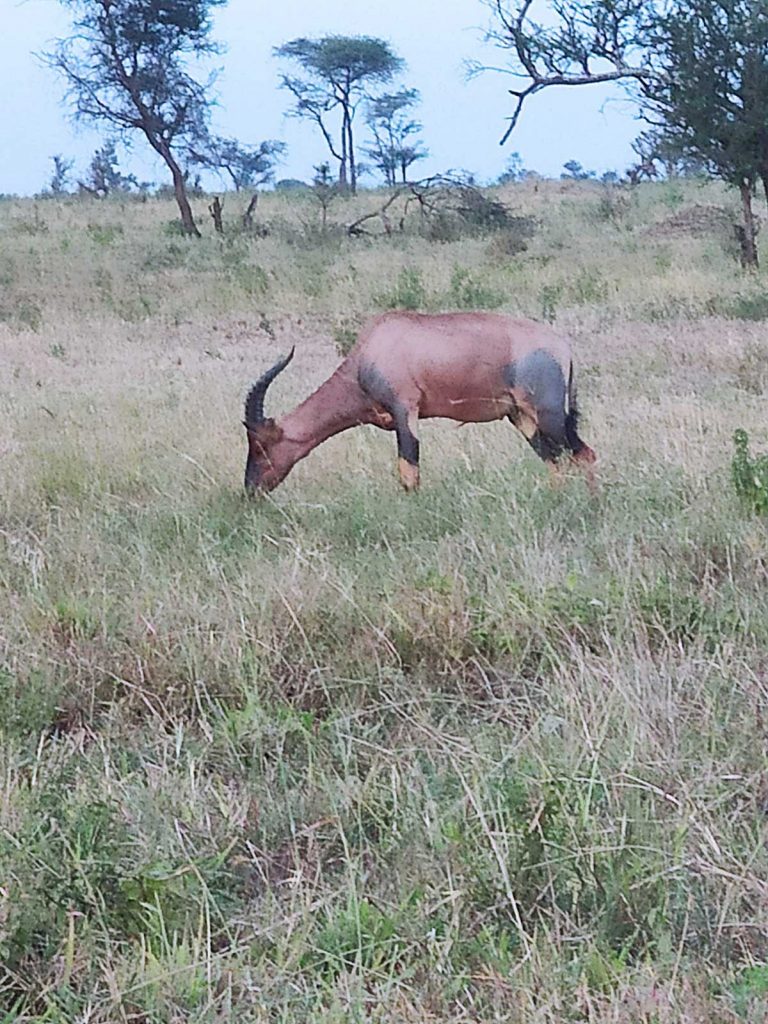
We drive into the vast expanses of the Serengeti. As far as the eye can see—endless savanna. We capture a hyena through the camera lens. Wildebeests and zebras graze together. Wildebeests tend to stay close to zebras because the latter have better hearing and detect predators sooner. A lone savanna elephant appears in the distance. Even farther away, through binoculars, we can clearly see a rhino. A lioness feasts on a recent kill. No, wait, sorry—that was back in Ngorongoro. Here, we continue driving, covered in thick dust from the passing vehicles.

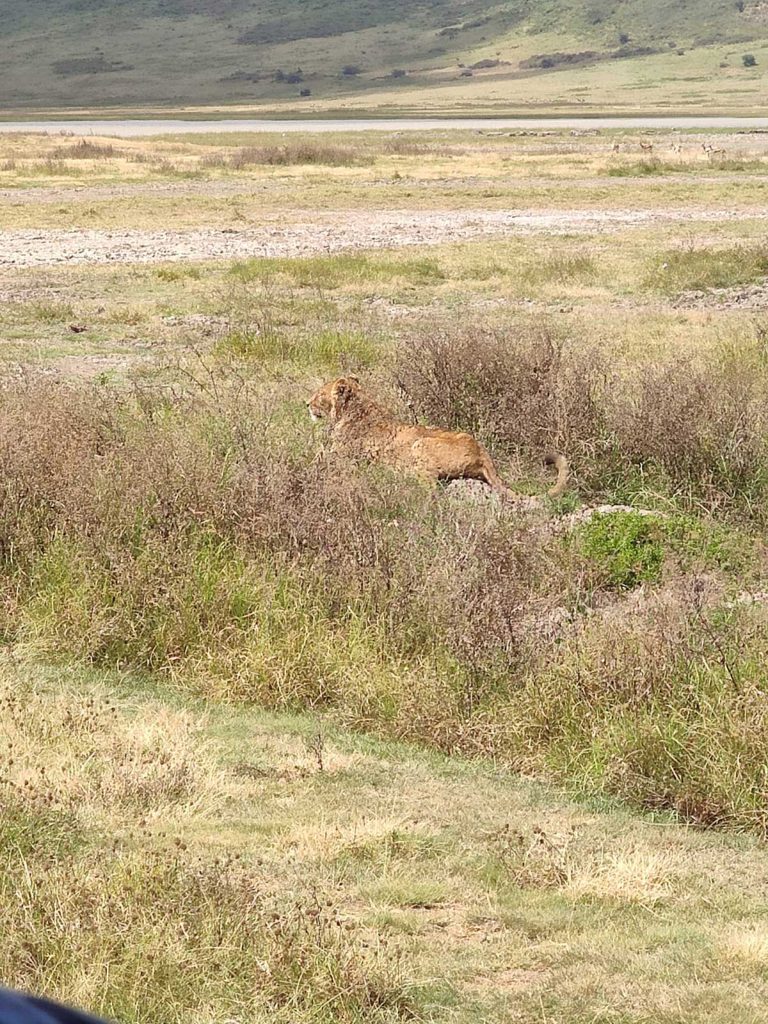
Gradually, the landscape changes. Water appears—swamps, small rivers. In one of the wider sections, about twenty hippos lounge in the water, occasionally opening their mouths wide. Soon, they will begin to emerge from the water, but we don’t have time to wait—our lodge is still far away. We arrive at seven in the evening. The accommodations here are large, well-equipped tents—this style of “glamping” is popular worldwide now. We receive flashlights and are advised to shine them around while walking to our tents—just in case an uninvited guest has wandered in. Dinner is delicious (a five-star service experience), and we spend some time around the campfire before heading to our tents, accompanied by attentive staff. The beds are very comfortable. That’s it—time to sleep.
DAY 4
Let me start by answering the question of why the Ngorongoro Crater left me somewhat disappointed. When I dreamed of seeing places like Easter Island, the Galápagos Islands, the Egyptian pyramids, or Lake Titicaca, I knew exactly what to expect. But I had once read that Ngorongoro was teeming with vast herds of animals, so when reality turned out to be different, there was a bit of disappointment. Though from a natural and scenic perspective, this place is stunning. And I did see plenty of animals, though mostly from a distance.
But the Serengeti made up for everything. Our glamping stay was quite an experience. At night, shining out the window with the flashlight revealed animals wandering through the camp—gazelles, hyenas. In the morning, a camp worker approached the tent to inform us that the hot water we had requested was ready, then lifted the outer flap covering the entrance. It was unusual, but the conditions were excellent.
As soon as we set off, a parade of wildlife began. Gazelles, giraffes, zebras rolling on the ground (that’s how they groom themselves), and storks.
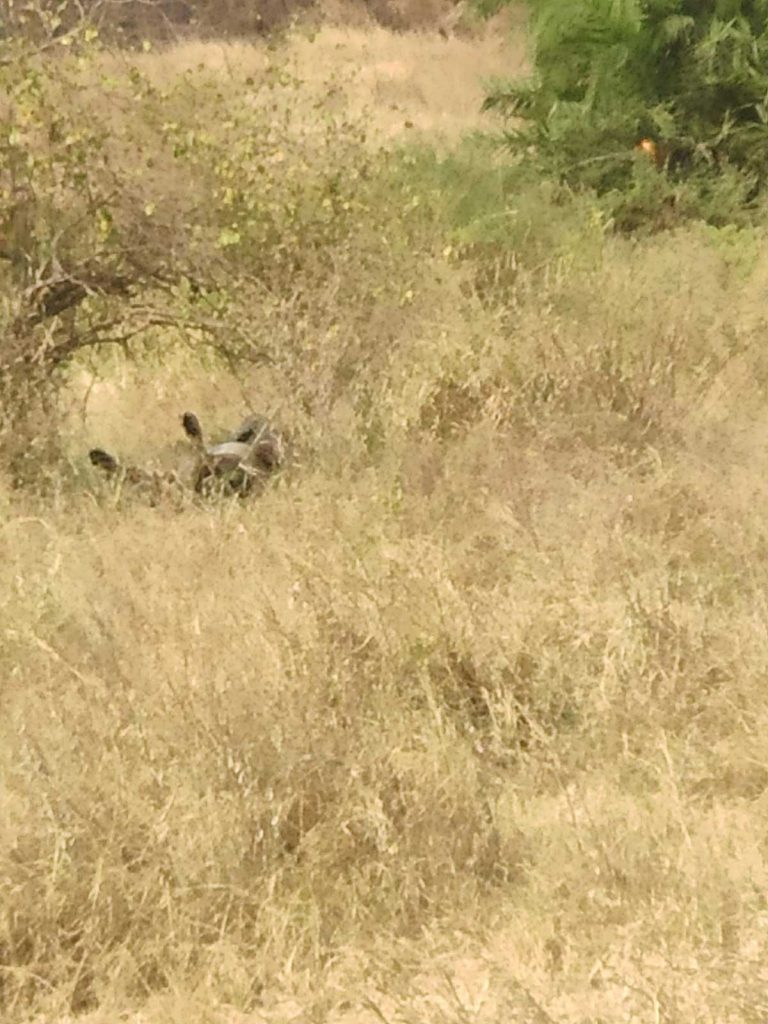
We approach a river which several dozen hippos have made their home. They splash, grunt, and bellow. A family of them emerges onto the bank to dry off. Immediately, a swarm of birds lands on them, picking at their skin to remove parasites. Symbiosis at work. A baby hippo quickly grows bored and flops back into the water.
Hippos can’t stay in the sun for long—their thick, multi-layered skin is highly sensitive to sunlight and cracks from burns. That’s why they spend the day in the water and graze at night, covering long distances. Right before our eyes, a massive bull surfaces and performs the famous hippo trick: flinging its droppings all around with rapid tail movements before diving back under.
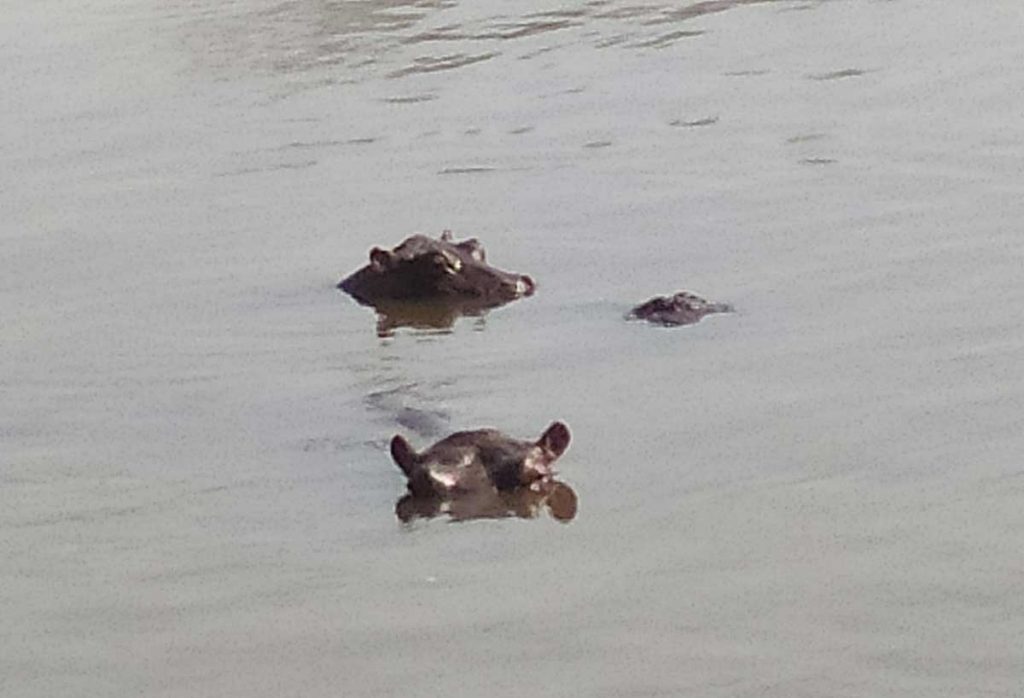
We continue driving. On a vast plain, a large herd of zebras grazes peacefully. Suddenly, from the tall grass in the middle of the field, a lioness rises, and immediately, the zebras create a wide circle around her. After pacing a bit, she decides to abandon the hunt and lies back down. Further ahead, another lioness tears apart her recent kill, while nearby, a vulture and a marabou stork perch on a tree, waiting for their turn.

Then our driver tells us we’re in luck: the Great Migration, which usually ends in May, has lasted longer this year due to late rains, and we will witness it. Here, the Great Migration is not a long-distance journey to distant lands but rather the movement of massive herds within the Serengeti in search of fresh grazing grounds.
We race to the place and find, stretching as far as the eye can see, an incredible mass of wildebeests—at least six thousand of them. We stand for a long time, absorbing this once-in-a-lifetime spectacle. A little farther ahead, we see a distant line of fire—park rangers are burning dried, inedible grass so that new shoots can grow in its place. Hundreds of wildebeests flee from the approaching flames. The fire spreads quickly, and soon, we can feel its heat and smell the smoke. It’s time for us to turn back. A sharp turn, and we speed away as well.
Time for a meal. We spread a tablecloth over the car hood and lay out the food we brought from the hotel for lunch. Afterward comes a long, uneventful drive, and I manage to doze off despite the bumpy road. I wake up just in time to see a sleeping lioness. We wait. She rolls onto her back, stretching all four paws into the air.
We continue our journey. Another lioness sleeps under a tree, with two barely visible cubs nestled in the grass. We wait again. Nothing happens. After a while, we watch a troop of baboons gathered near the road.
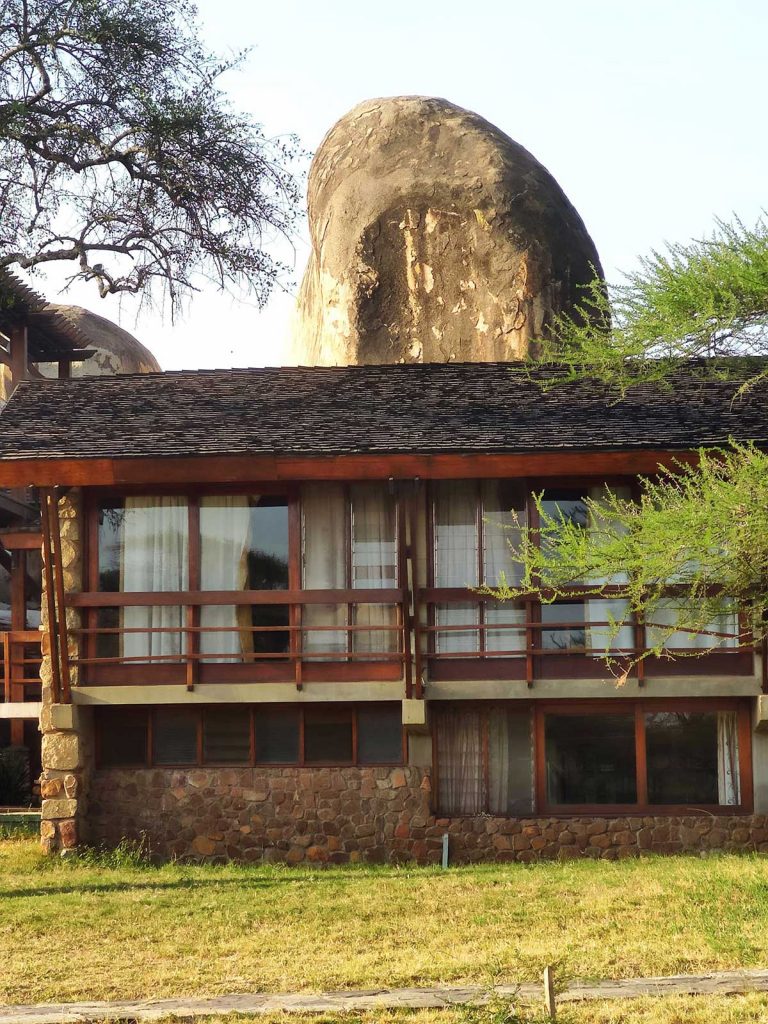
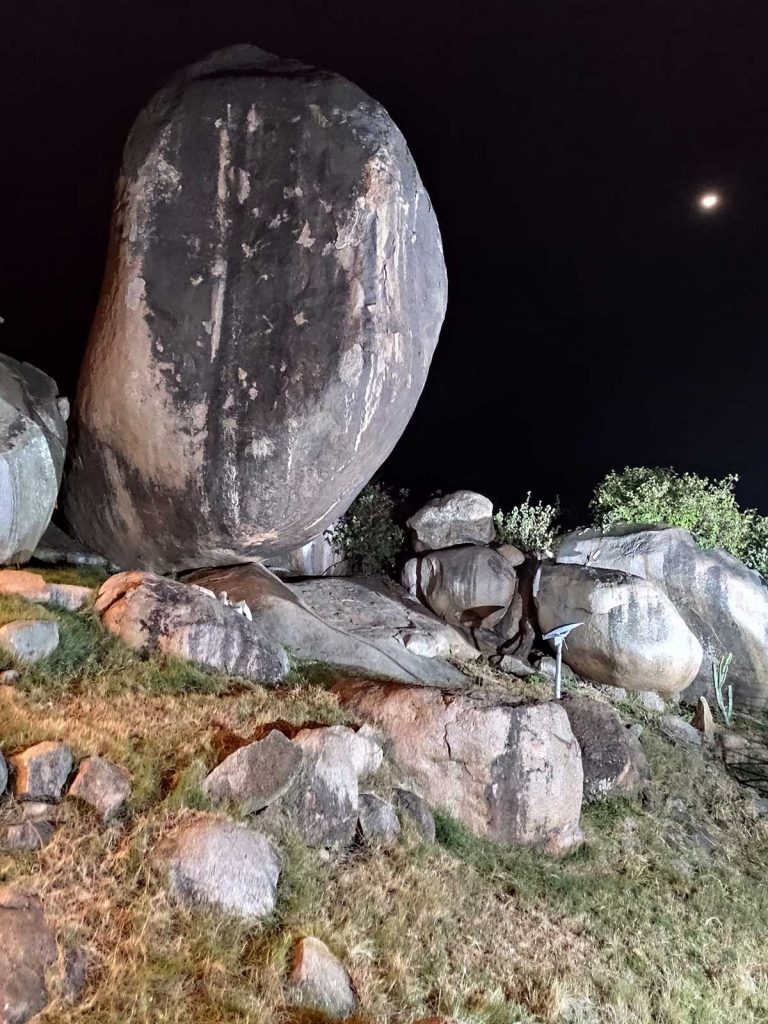
The day comes to an end, and we head to our overnight stay in the most luxurious hotel of our entire journey, built among massive boulders, some of which are integrated into the interior. It’s stunning. Tomorrow is our last day in the Serengeti.
